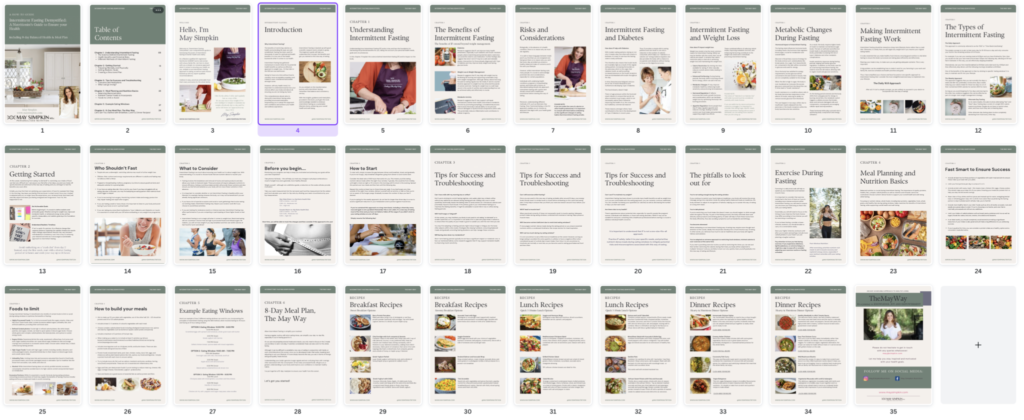
Many of us are now more health conscious than ever, buying and choosing food with their health benefits in mind but the hidden nasties behind our food labels can be quite surprising. Food manufacturers have responded to this with clever marketing tactics to make their foods and products sound healthy. However many of their clever tricks may inadvertently guide you to choosing their product in the belief that it is a healthy choice, but more often than not, this is not the case.
Whilst food manufactures are obliged to be truthful and of course only use food additives and ingredients that have been approved for consumption in the UK, there is scope to change the focus of their marketing; highlighting certain features and cleverly tricking you to believe the food or food product will conform to the “clean” healthy foods you want.
For example, labelling an orange juice as “fat-free” is certainly eye-catching to a consumer focused on reducing or avoiding fat, but as oranges are naturally fat free, labelling it as fat free is totally irrelevant as a health benefit, particularly as it also contains high amounts of sugar that will have negative health implications. Words such as “natural” can also be confusing. A fruit juice concentrate as a sweetener is natural but nevertheless very high in sugar, whilst a healthy looking granola containing high quantities of natural dried fruit, will render that brand less healthy due to the high sugar content.
Looking behind the marketing on the packaging and reading the food labels are key to ensuring you are actually making a good choice.
How can you avoid falling prey to food manufacturers’ tricks?
Here are 9 tips to help you identify the hidden nasties and make more informed decisions:
-
Number of foods in the ingredients list
The more ingredients there are, the further the food is from the real food source. If there are more than 3, then consider whether it is actually a good choice in the first place.
-
Order that foods appear in the ingredients list
Foods are listed by weight order, with the food that makes up the largest proportion of the food appearing first. Be wary of any sugars in particular, that appear at the beginning of the list, as these will make up the largest proportion of the food.
-
Portion sizes
To disguise the amount of sugar, fat or salt that a food contains, proportions are often listed according to portion size, which can be arbitrary, varying from brand to brand and often unrealistically small, to make the proportion appear smaller. Use the “per 100g column” rather than “per serving” to establish a better understanding
-
Calorie count is not crucial
Although good to be aware of calorie intake, calories are not all equal. It is more important to choose foods for their nutritional value rather than their calorie value. Energy and therefore calorie requirements differ between individuals according to factors such as age, gender, lifestyle and health goals
-
Lower fat claims
Any food which claims to be “low-fat”, “fat-free”or “0% fat” will invariably contain added sugar to replace the fat and therefore not necessarily the healthiest option. Full fat versions will provide more nutrients will be more satiating so you are more likely to eat smaller portions
-
Disguised added sugars
Sugar added to foods can be disguised with other names for sugar; including honey, syrup, nectar sugar or even healthy sounding fruit juice concentrate. Alternatively, they may be listed as glucose fructose, maltose, dextrose or lactose; quite simply, anything ending in an –“ose” is a simple sugar and should be avoided in large quantities. Low sugar foods will contain 5g or less per 100g
-
High Fructose Corn Syrup (HFCS)
This deserves to be noted separately from other sugars as it is ubiquitous in many processed foods including fizzy drinks, sweets, sweet yoghurts, salad dressings, sauces, condiments, breakfast cereals and granola bars, and even bread. It is a highly processed sugar derived from corn starch and is similar to sucrose (table sugar), composed of 2 simple sugars; glucose and fructose. However, as a syrup there is no bond between these sugars and therefore it is very quickly released into the blood stream after consuming, playing havoc with blood sugar balance and energy levels as well as leading to an increased risk of diabetes and obesity
-
Salt vs Sodium
Salt is added to many foods, including bread, cakes and biscuits, to bring out the flavour. Consumption of too many processed foods can lead to a high intake of salt, which can lead to health problems including high blood pressure and cardiovascular disease. To confuse the consumer, sometimes manufacturers will use sodium on the label instead of salt; you will need to multiply this amount by 2.5 to establish the actual salt content. The recommended maximum is 6g per day, the equivalent of just 1 teaspoon
-
Natural-sounding names
Understanding the consumers’ aim to avoid chemicals and additives (eg E numbers), manufacturers have resorted to using alternatives that sound more natural, so that the food sounds more “real” than it actually is. For example:
- Tapioca Starch is often added to cheaper meat products to help it absorb and retain added water. It is in fact a chemical but this full name suggests it is a natural food that adds bulk
- Rice Extract is chemically produced and found in many products as an emulsifier and stabiliser to improve “mouth feel” of otherwise tasteless fat-free foods
- Caramelised sugar syrup is a brown sweet colouring agent that is used to add a golden colour to supposedly wholegrain breads that actually contain little more than refined white flour with just a tiny proportion of wholemeal flour.
The worst offenders
- Pre-packed salads
Many salad leaves are packaged as “ready to eat” which means they have been pre-cut, washed and packed to ensure that the leaves remain fresh for as long as possible. Some will state that they will have been washed in spring water but nevertheless, the washing process will still need to add chlorine and fruit acids as a preservative - Added vitamins
In reality, the vitamins added to boost the nutrient content of the food are likely to be chemically-processed versions of the natural vitamins, which are not as easily recognised by the body and therefore not as bio-available for the body to use. - Added soluble fibre
This is often modified starch which is cheap and easy to include in a food to add bulk and reduce the overall quality of the food - Trans fats
These are noted on food labels as “hydrogenated fat”, “partially hydrogenated fat”, “semi-hydrogenated fat” or “shortening” and are used in the production of cheap fried and baked foods to increase shelf life and improve flavour. Their chemical structure are not recognised the body and can wreak havoc as the body tried to process and eliminate them. Some products that contain less than 0.5g per serving can still claim to be free of trans fats. Foods where trans fats have been often used margarines, crackers, biscuits, salad dressings and chips - Food colourings and preservatives
Many E numbers used to colour foods more vibrantly, increase shelf-life, act as a thickener/stabiliser or provide sweetness have been linked to cancer. For example commonly used Aspartame and other chemicals such as Sodium Nitrate or Nitrite used as a preservative and colouring agent in processed meats, including bacon and smoked meats
The Bottom Line
JERF…Just Eat Real Food!
With the confusing labelling, consider following this simple rule of thumb when it comes to healthy eating…Just Eat Real Food! Opting for real food and cooking simple meals from scratch is much easier and cheaper than you may think.
It is worth noting that not all foods need to have a nutrition label; for example fresh fruit and vegetables that have been pre-prepared (peeled or cut), flours, herbs and spices, tea/coffee, some vinegars are exempt.
For further guidance on specific food labelling in the UK, CLICK HERE
Part of recipe collection
9 Nourishing Snacks that Energise, Satisfy & Banish Cravings
CLICK HERE
As a Masters qualified nutritionist, based in London, UK, I’ve set up this free PRIVATE group to provide a safe and supportive community where we can share all things health; from nutrition and cooking tips, recipes and any thoughts to keep you inspired and on track with a healthy lifestyle.










0 Comments